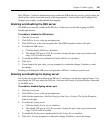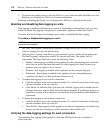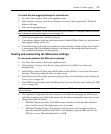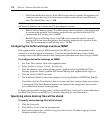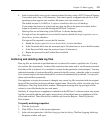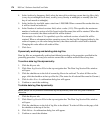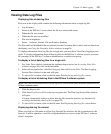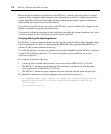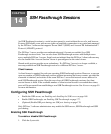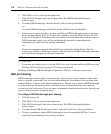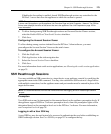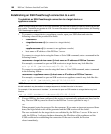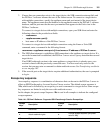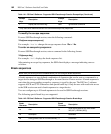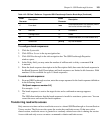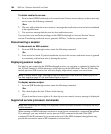
177
CHAPTER
14
SSH Passthrough Sessions
An SSH Passthrough session is a serial session opened to a unit without the use of a web browser.
From an SSH client, a user with access rights can establish a connection to any serial unit managed
by the DSView 3 software that supports Secure Shell 2 (SSH2) and Avocent DS Authentication 2
Protocol (ADSAP2) protocol.
The DSView 3 server provides user authentication and, if events are enabled, logs SSH
Passthrough session events. You can also share SSH Passthrough sessions with multiple users
across multiple DSView 3 servers. Serial sessions initiated from the DSView 3 client software may
also be shared if the Avocent Session Viewer is preconfigured as the serial viewer.
Shared serial sessions provide server redundancy. If a DSView 3 server is no longer available, a
user may establish an SSH Passthrough session to a different DSView 3 server.
Client licenses
A client license is required for each user operating SSH Passthrough sessions. However, a user can
open any number of SSH Passthrough sessions without increasing the license counter, provided the
username is identical, and resides on the same DSView 3 server and network source address for
each SSH Passthrough session. Once the user closes all SSH Passthrough sessions, the client
session license is freed. If the available number of client session licenses is exceeded three times,
users will be prevented from establishing a new SSH Passthrough session. See Licenses on page 50
for more information.
Configuring SSH Passthrough
• Enable the SSH server; see Enabling and disabling the SSH server on page 169.
• Enable SSH Passthrough; see Enabling SSH Passthrough on page 177.
• (Optional) Enable SSH port sharing; see SSH port sharing on page 178.
Only DSView 3 software administrators may enable the SSH servers, SSH Passthrough and SSH
port sharing.
Enabling SSH Passthrough
To enable or disable SSH Passthrough:
1. Click the System tab.



